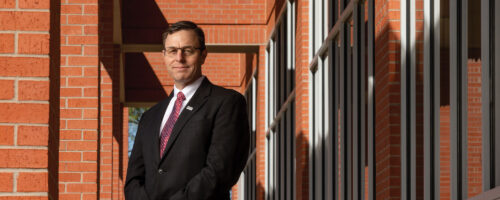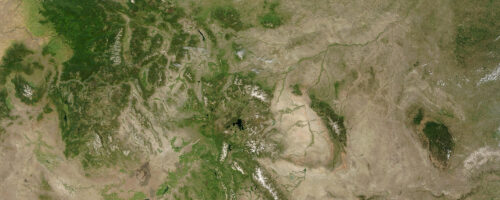Blue-Ribbon Weekend
There’s something powerful and essential about the fair. For many of the visitors who never venture away from a city’s cement streets, the livestock competitions, the creative arts and AGtropolis is as close as they will ever get to experiencing the undeniable joy of agriculture.
A cinnamon roll should not weigh as much as a brick. But there it was, spilling out of its little paper tray, bathed in morning light, loaded with extra pecans and a plum-sized dollop of frosting. So calorically dense and gooey obscene was this particular baked good, the mere sight would have caused any cardiologist to burst into tears.
There’s only one place in the world to find such a gloriously inappropriate treat — the Oklahoma State Fair. Every fall, my family makes its annual pilgrimage to see the majesty and mayhem of the event simply known in our house as “The Fair.” And each journey ceremoniously begins with a Silver Dollar Cinnamon Roll (followed immediately by a shot of insulin and regret).
For those who have never attended the fair, it’s the only place on Earth where you can watch internationally acclaimed acrobats, see actual trained bears, enjoy a dog show, judge the six-horse hitch world championships, shoot hand-crafted longbows and buy a hot tub.
There’s the Midway, where the carnies spin their ring-toss tales, promising small ego boosts and a stuffed member of the animal kingdom; just three tries for a dollar. And, of course, there are miles of fair food. Everything is deep fried, like God intended. Or it’s on a stick. (Personal side note: If you’re selling food on a stick, I’m buying. Corn dog? Two please. Fried cheese? Fried yes. Sirloin? I will never eat steak any other way.)
However, once you peel away the veneer of vendors and tsunami of cheap chachkies, you discover the soul of the fair. Like most of life, the fair’s purpose is undeniably rooted in agriculture.
It’s not about the arena full of made-everywhere-but-here knickknacks; it’s about the homemade jam and canned goods in the Creative Arts Building. It’s about the cakes that Mom made, the art from students across the state, the crochet masterpieces that will become family keepsakes.
It’s not about foraging through a sea of food trucks; it’s about the grazing animals and the students who have cared for them. Walk past the entertainment plaza and through the auto show. Sidestep the silliness. Look for Barn 2A. Smell the alfalfa hay. Marvel at the stature of the Clydesdales. Stop and watch the 12-year-old brushing their steer before they enter a show ring.
Months of work come down to a few minutes in the spotlight. They’ve done the chores. They’ve cleaned the stall. They’ve tended to their animal’s every need. And for what? A chance at a blue ribbon that will hang in their room and — someday — will remind them that sweat equity always yields a return.
There’s something powerful and essential about the fair. For many of the visitors who never venture away from a city’s cement streets, the livestock competitions, the creative arts and AGtropolis — a building filled with a menagerie of animals and learning exhibits — is as close as they will ever get to experiencing the undeniable joy of agriculture. This event, these 10 days, link urban and rural in one messy and magical place. The fair is a gentle reminder of what is important and who we are. Not who we were, but who we are.
Agriculture will never be past tense. It lies forever in our future, a necessity that provides more than just food, fiber and feed, but offers us an opportunity to learn so much more about ourselves.
For me, the annual trip to the fair always reminds me of when I wore boots and had a cap-gun six shooter, when the Lone Ranger was my favorite TV show, and when I showed a goat named Honey and won a blue ribbon. Every fair, that memory resurfaces like a lost penny after a hard rain. And with it the understanding that we are all called to carefully steward what is before us — be it land, animal or the lives of those around us.
Today, I have the privilege of working at Noble Research Institute, an organization built on the principles of compassionate, intentional stewardship. More than 300 of us have come together from around the world to make a tangible difference in agriculture — a mission that impacts ranchers and farmers first but ultimately serves all of society. We strive every day to advance projects aimed at providing solutions to agriculture’s great challenges. Like all jobs, our days are filled with meetings and emails, planning and execution. Then — every once in a while — we have a blue-ribbon weekend and make deep-fried memories. We celebrate the effort, not just the harvest. We invite others to see, if only for a moment, why agriculture can inspire us all — no matter our addresses. And we remember why we work so hard.
It’s so that we can grow up in a place and a time that still celebrates a state fair, that still teaches the value of stewardship before the show ring, and — on occasion — still gives us a chance to eat inappropriately sized cinnamon rolls.



Comment